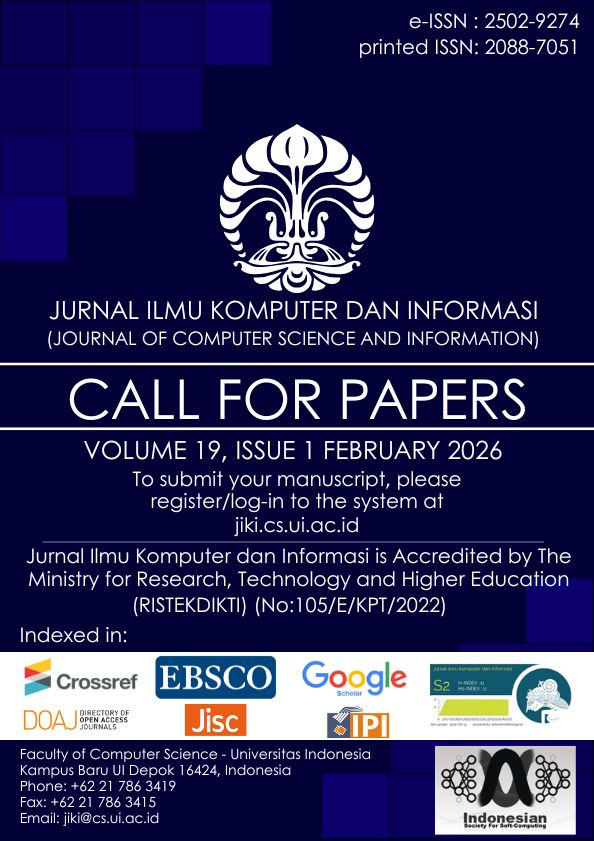Comparing ASM and Learning-Based Methods for Satellite Image Dehazing
DOI:
https://doi.org/10.21609/jiki.v18i2.1521Abstract
Recent advancements in optical satellite technologies have significantly improved image resolution, providing more detailed information about Earth's surface. However, atmospheric interference, such as haze, is still a major factor in image capture. The interference results in visibility degradation of the acquired images, hindering computer vision tasks. Numerous studies have proposed various methods to recover haze-affected regions in satellite images, highlighting the need for more effective solutions. Motivated by this, this paper compares different atmospheric dehazing methods, including Atmospheric Scattering Model (ASM)-based and deep learning-based. The results show that SRD is the best ASM-based method, with a PSNR value of 19.09 dB and an SSIM of 0.908. Among deep learning models, DW-GAN achieves the best restoration results with a PSNR value of 26.22 dB and an SSIM of 0.959. SRD offers faster inference times, but still suffers from residual haze and noticeable color degradation compared to DW-GAN. In contrast, DW-GAN provides a more complete haze removal at the cost of higher computational demands than ASM-based methods.
Downloads
Published
How to Cite
Issue
Section
License
Authors who publish with this journal agree to the following terms:
- Authors retain copyright and grant the journal right of first publication with the work simultaneously licensed under a Creative Commons Attribution License that allows others to share the work with an acknowledgement of the work's authorship and initial publication in this journal.
- Authors are able to enter into separate, additional contractual arrangements for the non-exclusive distribution of the journal's published version of the work (e.g., post it to an institutional repository or publish it in a book), with an acknowledgement of its initial publication in this journal.
- Authors are permitted and encouraged to post their work online (e.g., in institutional repositories or on their website) prior to and during the submission process, as it can lead to productive exchanges, as well as earlier and greater citation of published work (See The Effect of Open Access).










